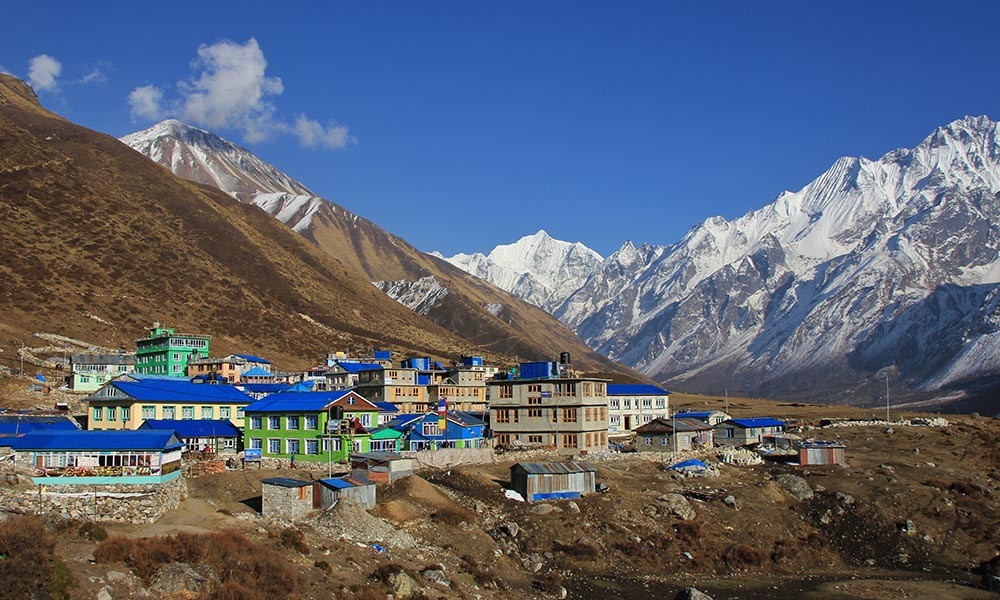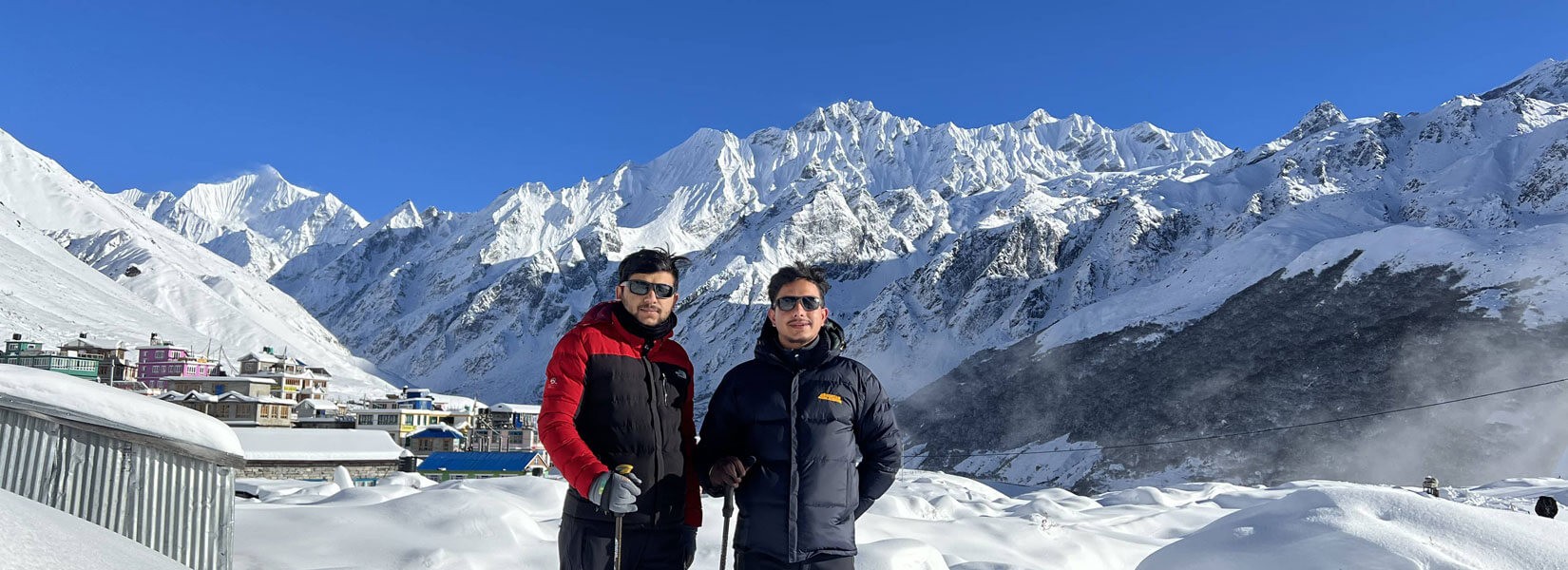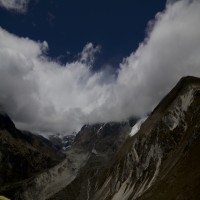Chats on WhatsApp +9779860313572
Why should you do the Lantang valley trek?
The varied climactic zone
The Langtang valley lies within the area of Langtang National Park. This park is a protected area popular for having a varied climate zone. You can find subtropical climates to alpine climates here. This varied climatic zone allows diverse wildlife to exist. One-fourth of the park lies within a thick forest. The trekking through trails housing such land areas will be pretty adventurous. You will find oak, maple, pine, rhododendron trees, etc. Animals of various species also live in the area. Rare species like red panda, snow leopard, and Himalayan tahr have shelter here. The place also is home to over 250 bird species.
The culture of the region
In the remote region of Lantang valley resides the natives of the region referred to as “Langtangpa”. The natives follow Tibetan Buddhism and culture. They have their own language closely related to the Tibetan language spoken in the Kyriong of Tibet. The natives worship the Lantang Lirgrung mountain as their god.
Although the Lantangpa people are also referred to as Tamangs, their culture is very unique to Tamangs. Natives believe Lantang to be a hidden valley blessed by Guru Padmasambhava. You will also find a huge population of Sherpas and Tamangs here. The cultural lifestyle and its influence is very strong in the Lantang region. Getting to experience this in remote trails of Nepal is a great experience.
Vistas of the region
The Lantang trek gives you immensely beautiful views of the roadways and mountains of Nepal. The beautiful landscape’s viewing will start as early as you leave Kathamdnu through the Trishuli route. The trekking trail takes you to mesmerizing trails of rhododendron, oak, and pine trees.
The Lantang National national park, a significant part of the trek, also aids in its beautiful vistas. The various destinations throughout the trek also show beautiful natural and cultural landscapes. Yak pastures and local village houses will be a mesmerizing environment4 to experience. Mountain views of peaks like Lantang Lirung, Ganesh Himal, Dorje Lakpa, etc, will leave you enchanted.
Unspoiled trekking trails
The road to Lantang valley trek consists of a journey towards the rarely trekked region of the northern Tibet border. Lantang valley also has the name “beyul” which translates to a hidden valley. Such valleys were restricted to foreigners in the past, so they rarely get many visitors. The Lantang national park is also an unspoiled visit destination. Trekking to such places is always a unique experience.
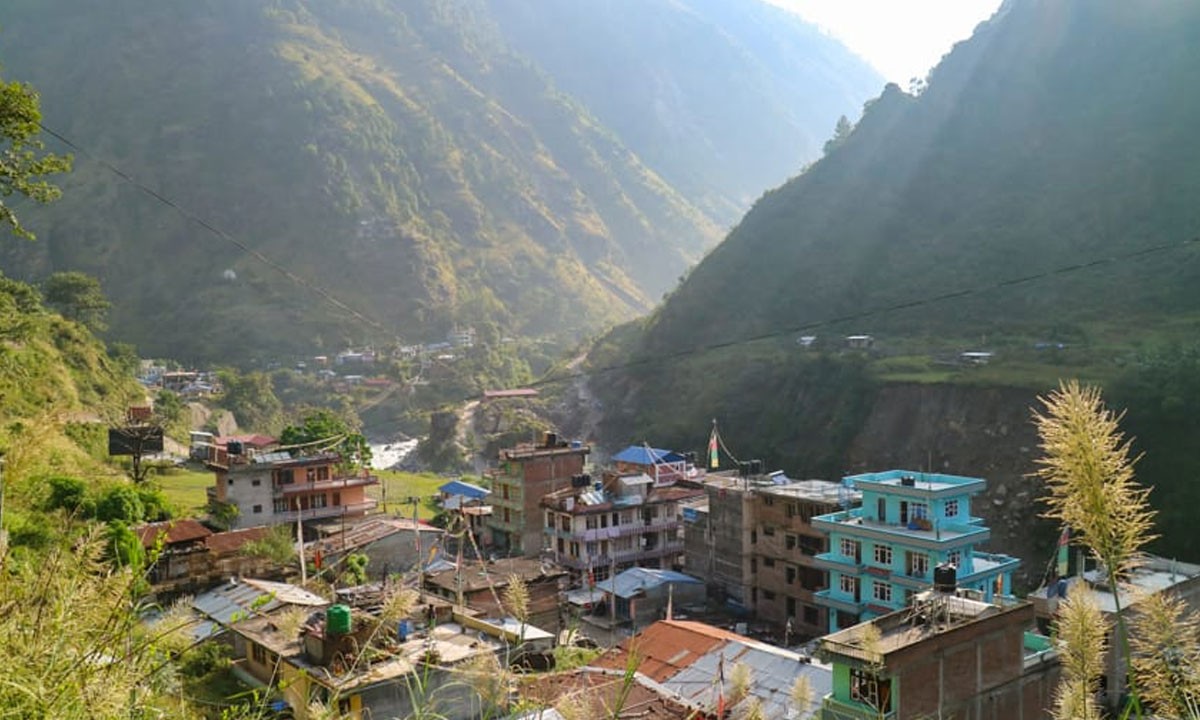
Miscellaneous information about the trek
Accommodations in the Lantang valley trek
The accommodations in this trek vary based on the altitude you are staying in and your budget. Most rooms in the higher part of the Lantang trails need to be shared with trekkers. These shared rooms may or may not have an attached bathroom. However, a shared common toilet will definitely be available. You will get a proper mattress, bedsheet, blankets, and pillow.
Lower trails do give you services with a single room, but it is rare at higher altitude places. Perhaps paying extra might help you get single rooms even in higher places.
Lower destinations like Syabrubesi give you very flexible and luxurious single-room services. You will likely get attached toilets and bathrooms as well.
Toilets and Bathrooms
Most remote regions of the trek will likely have a squatting toilet, whereas regular commotes are available in more facilitated regions. You could get joined toilet to your rooms or shared ones. This also depends on where you are staying for the day.
The hot water facilities for baths also vary; some places have automatic hot water from taps and showers. Some remote places require you to set separate hot water in a bucket and use it. You might also have to pay extra money for hot water in some places.
Communal dining room
Every tea house and lodge in the trek will have a common dining room area. Most of these dining areas have a fireplace. Enjoying a good meal in front of a fireplace after a long day's worth of trek will be very satisfying.
Extra facilities needed for the Langtang valley trek
During your trek, you need miscellaneous facilities like electricity, Wi-Fi, etc. You will have adequate electricity and wifi in the lower part of the trek. But such facilities become slim as you trek higher. Local tea houses might use solar energy for power generation. If you wish to charge your electronics, you should bring your own power bank. But if you choose not to, you could get your gadgets charged by paying a small amount of money.
You can also get a SIM card back in Kathmandu if you want reliable internet services. Ncell and NTC SIM cards are the cheapest and most used in Nepal.
Map Section
This is the standard Langtang Valley Trek map of our 8-day itinerary plan that you will follow during your trek. After driving from Kathmandu to Syabrubesi, you will slowly move along the rising trail to reach Kyanjin Gompa, and after hiking to Tsergo Ri, you will descend on the same route to return back to Syabrubesi.
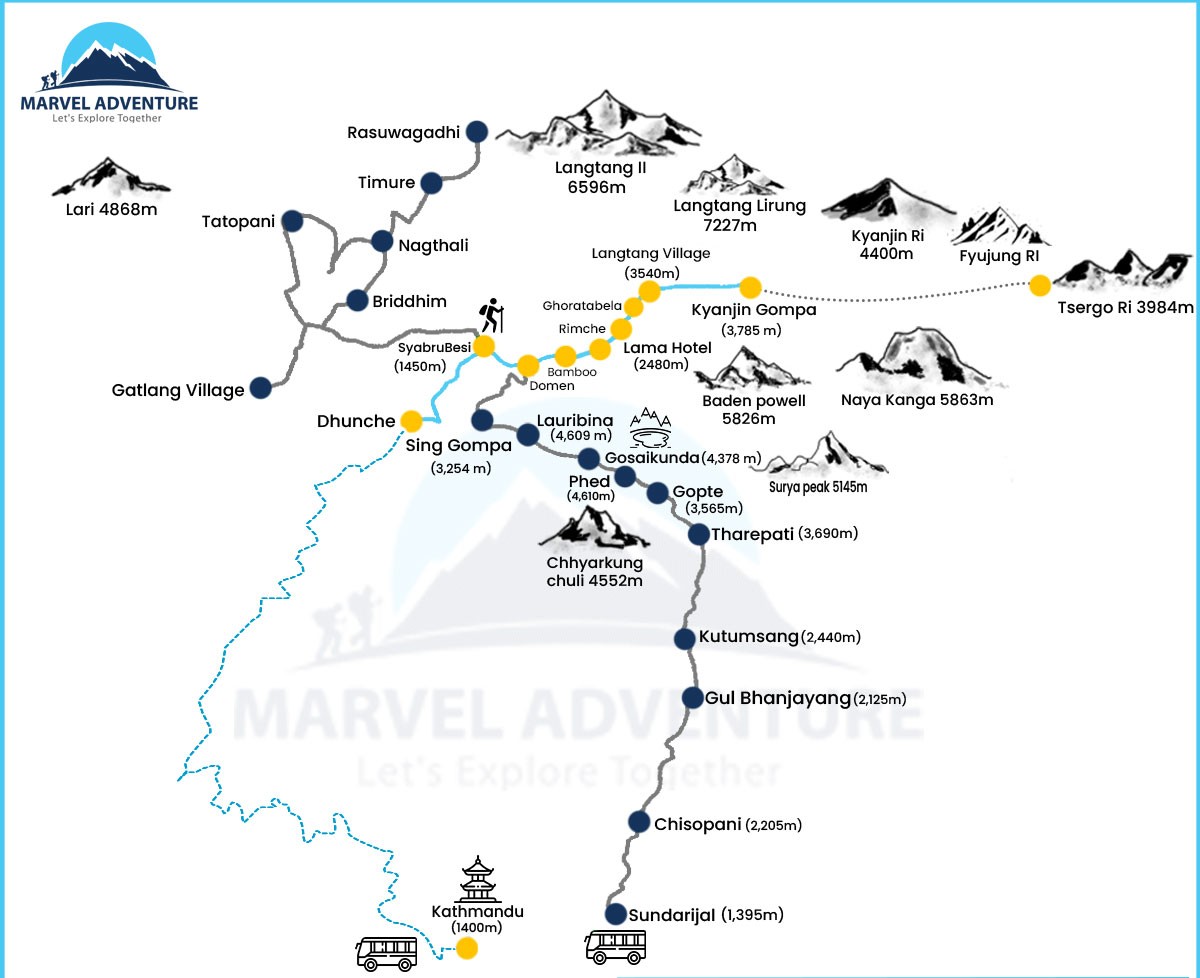
Private Joining and Group Joining Option
There are two types of trek joining options for the Langtang Valley Trek: private joining and group joining. For the group joining option, you will join the trekking group that is open for a specific time. The itinerary plans are pre-determined, and setting out dates are specified. Thus, you will have to join the trekking group on the set dates, as flexibility is not available in this option. Similarly, the group is joined by random trekking enthusiasts all over the world.
As for the private joining option, only the members you prefer will tag along in the journey with you. Every member of the group will be the one you prefer, and you don’t have to worry about joining a random trekking group. You will also have flexibility for the starting date, as all the members of the trekking group will be your friends and family.
Food and Accommodation
The Langtang Valley Trek Nepal is famous for its incredible cultural experience and its diverse beauty. That’s why the region has been labeled as the third most popular trekking destination in this Himalayan country. So, for the food prospects, you can expect a wide range of delicacies from the cultural dishes, and international dishes to the unique blend menus with burst of flavors.
For the accommodation options, in the standard package you will rest at teahouses along the trail. The teahouses offer a moderate level of facilities, with all the modern facilities at the lower regions and basic amenities at the higher regions. There is also a package upgrade option available for this route where you can enjoy a more personalized experience.
Weather and Temperature
Both spring and autumn have the most stable weather conditions for this exciting Langtang Valley Trek. The spring season accommodates the trekkers with a generally warm climate; the temperatures in this nature’s peak season hover around 10°C to 20°C during the daytime. At night, it is mostly chilly in the Himalayas, and the temperatures drop to around 0°C to 5°C. Similarly, in autumn, which is another peak point for the Himalayan explorations, the temperatures range between 10°C to 18°C during this season. The nighttime and early morning in this session can drop to -1°C to -10°C.
As for the off-season, such as summer/ monsoon (June to August) and winter (December to February), the weather can be challenging and unpredictable. During the monsoon season, the temperature of the Langtang Valley hovers around 10°C to 25°C during the daytime. The nighttime temperatures are rather cool and range between 10°C to 15°C. Winter, the coldest month on the mountain, on the other hand, has day temperatures of 5°C to 10°C
And the night temperatures can fall upto -10°C to -20°C.
Internet and Charging
As the Langtang Valley Trek takes you across the third-mainstream region for Himalayan adventures, you can expect a good level of service along the trekking trails. You will be able to use the internet services and charge your electronics at the teahouses along the trail. The lower regions are powered by hydroelectricity, whereas the higher regions are more reliant on solar power. For the internet services, you can use the Wi-Fi services provided by the teahouses. In case the connection is not good, you can also switch to the data packages offered by the major mobile networks such as NTC and Ncell.
**Note: For the use of internet service and charging your devices, you will have to pay around US$ 1 to US$ 5, depending on the altitude of the region**
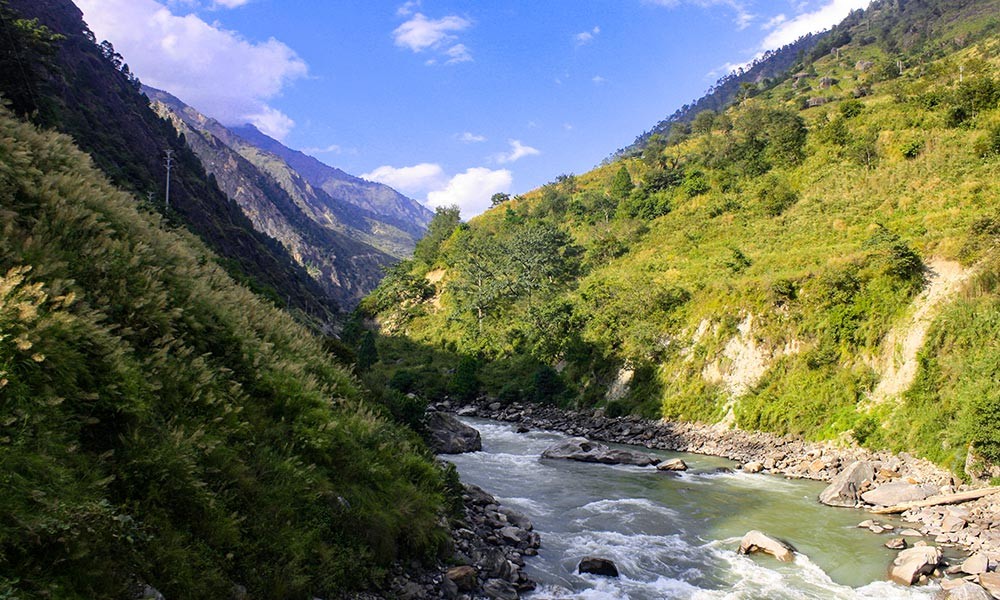
Laundry and Hot Shower
During your 8 Days Langtang Valley Trek, you will be able to enjoy both hot shower and laundry facilities offered by the teahouses/lodges along the trekking route. In the lower regions, the bathrooms are designed in Western style with a shower and flush system, and washing machines are used for the laundry. So, you won’t find much difference in the available services from that you are used to. However, as you ascend higher, the teahouses are more adaptive to the traditional system due to remoteness; still, you will be able to take a bath with hot water even there.
**Note: The teahouses charge around US$ 2 to US$ 5 for both laundry and hot shower facilities**
Luggage Storing Option
For this week-long journey in the Himalayas, you can leave your luggage at the care of your hotel. They have proper storage options and will store your luggage during the time of your trek. However, they will charge you for storing the luggage on a daily basis. So, if you want, you can leave your luggage with Marvel Adventure during the trek. We will store your luggage at our office for absolutely free, and you can enjoy your journey without worrying about anything.
Pickup and Drop-off
Besides the coverage for all the land transportation facilities during the trek, Marvel Adventure also offers pickup and drop-off facilities if necessary. We will receive you from your hotel and, after the completion of the trek, drop you back to your hotel. If you need services for other transportation needs, i.e. for sightseeing, short tours, or airport drop-off and pickup, we can also arrange that.
Daily Routine
Every day on the trails of this iconic mainstream Himalayan trekking destination is a blessing. Each day of your trek will unveil the mystical charms of the mountains and the beautiful culture hidden and treasured for centuries. Your trekking day will start with a warm and tasty breakfast (served at around 7 AM to 8 AM) prepared with fresh and healthy ingredients. After enjoying your breakfast, your guide will then provide a short briefing about the particular day’s adventure, and you will move to explore the natural charms and cultural highlights of the trails.
After trekking for 3 to 4 hours, you will then take your lunch break and take a rest for about an hour. Then, for the remaining portion of the trail, which is mostly about 2 to 3 hours long, you will slowly follow the exhilarating trails heading toward the stop point. If you have enough daylight after arriving at your destination, you can explore the region, but make sure to consult with your guide first. Dinner will be typically served around 6 PM to 7 PM and after enjoying with your trekking group, you can spend your time as you want. Your guide will also brief you about the next day’s adventures and give pointers on what to expect and how to prepare for the incredible adventure.
Trip Extension
Our standard Langtang Valley Trek lasts about 8 Days; considering other Himalayan explorations, this is a short and sweet trip. So, after the trek, if you want to extend your stay in the country and add some adventures to your vacation, we will help you in every way possible. Marvel Adventures also provides assistance for the visa extension procedure, custom-plans other activities for your extended stay, and even arranges the modes of transport befitting your needs. We also offer several tours and short hiking prospects in and outside the valley that you can choose from for your extended stay.
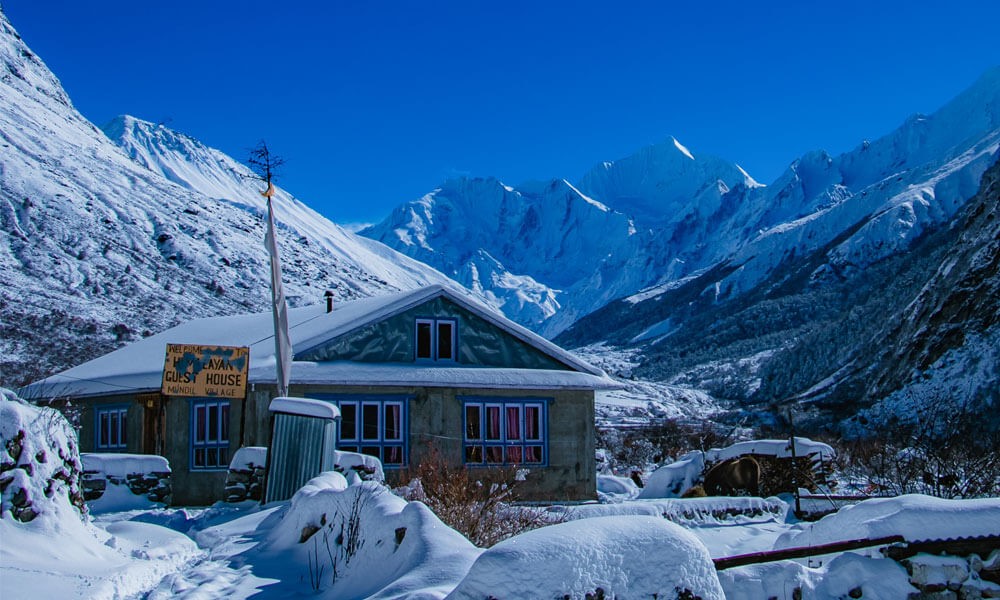
Booking Procedure
The booking procedure with Marvel Adventure is swift and efficient. For the 8 Days Langtang Valley Trek with us, you can directly book the package from this page (from price holder). For the convenience of our clients, we also offer the package customization option for the Langtang Valley Trek Nepal if you want more control over the overall itinerary plans. If you want to book this incredible Himalayan without going through the form fill-up process, you can directly contact our team with our Contact Page. Our representatives, who are available 24/7 will provide assistance for any kind of adventure you are looking for.
Guide and Porter
Our Langtang Valley Trek cost will take care of all the general expenses of your trip, including a government-licensed guide and a helpful porter. Both of these professionals are a core part of the trekking and mountaineering industry, and they add value to your adventures. Trekkers are responsible for taking care of every aspect of your journey, from your health, safety, comfort, and security to logistic details and providing detailed information about the highlights. Porters who help you with your luggage are equally important parts of the trekking adventures. As they take care of your heavy luggage, you will be able to travel more lightly and fully enjoy the experience.
**Note: The cost of a guide for the Langtang Valley Trek is around US$ 30 to US$ 35 per day, and for the porter, the cost is around US$ 20 to US$ 25 per day. Your Langtang Valley Trek Cost with Marvel Adventure will cover the expenses of both the guide and porter**
Safety and Satisfaction
Marvel Adventure adheres to every safety protocol and procedure to ensure that our clients enjoy a safe and comfortable journey. We do not compromise on the quality of the service and aspire to offer the best value packages so everyone can enjoy this remarkable Himalayan odyssey. During the Langtang Valley Trek Nepal, Marvel Adventure will only accommodate the best available facilities. Our 8 Days Langtang Valley Trek is a fully immersive journey in this third mainstream region, and we will not leave any stone unturned for the exploration, including the hike to the most popular viewpoint in the valley.
As for safety, our guide and the trekking crew have received training for both the first and high-altitude care. So, you don’t need to worry about anything during your trek; your guide will check your physical conditions during each day of the trek and also moderate if you are showing any symptoms of altitude sickness. Your guide will be responsible for taking appropriate measures if you happen to get unwell during the trek and if an evacuation operation is needed he/she will coordinate with our main office to execute the operation quickly and efficiently.
Frequently Asked Questions about Lantang Valley Trek
How challenging is the Lantang Valley trek?
The Lantang Valley trek is not very challenging but rather very easy. It does not need extensive physical strength and does not take you to very high altitudes. The trek is suitable for even novices.
What are the best and worst times for the Lantang Valley trek?
The best times for the Lantang Valley trek would be the seasons with less rainfall and snow. They usually occur during the months of March to May or September to November. In other words, the spring and autumn seasons are the best time for the Lantang Valley trek. But the rainy and freezing monsoon and winter seasons are the worst times for the Lantang Valley trek.
What are the permits necessary for the Lantang Valley trek?
Langtang Valley Trek requires Trekkers Information Management Systems(TIMS) and Lantang National park entry permits as the prime permits. Sometimes if you choose a different route for the trek, you might also need the Shivapuri National Park entrance fee.
Do I need to get insurance for the Lantang Valley trek?
Yes, Travel insurance is a must for any treks you go in a foreign country. Insurances help you in cases of emergencies, accidents, disasters, or additional costs. You must ensure you have covered your travel insurance for the Lantang Valley trek.
How are the accommodations during the Lantang Valley trek?
The accommodations of the Lantang Valley trek varies based on daily destinations. Every destination has certain lodges or hotels available. But the accommodations vary based on how much you pay. You will get good hotels if you want a very comfortable and lavish night’s sleep. But if you want to stay on budget, you could just stay in cheap guest houses or tea houses. Bringing extra sleeping bags could help if you choose the latter option.
How are foods during the Lantang Valley trek?
The basic meals available in Nepal trail treks are rice with lentil and curry. Nepali snacks like mo:mo dumplings or chowmein noodles are available. But hotels and guest houses accommodate to meet many tourists’ needs. You can get a variety of non-Nepali food options too. Any food you get served are always hygienic and fresh.
What are the facilities for drinking water on the trek?
On this trek, you can easily access drinking water, either boiled or filtered.
Do I need to carry extra cash?
Most of the Lantang Valley trek requirements get covered within the packaged payment. But bringing extra cash for donations, souvenirs, or miscellaneous spending is always a good idea.
